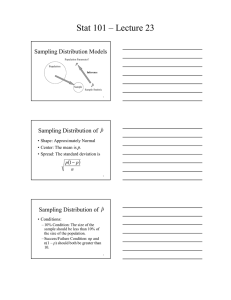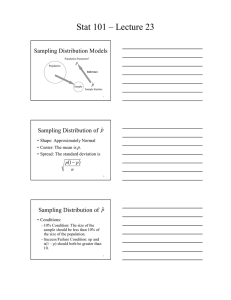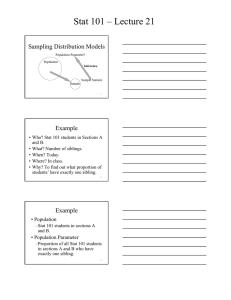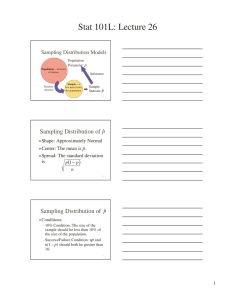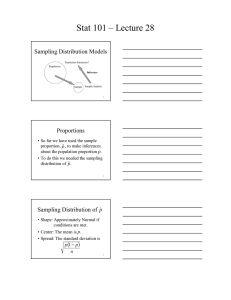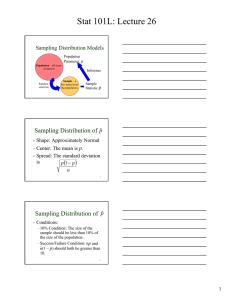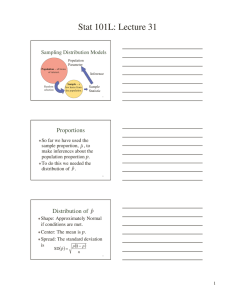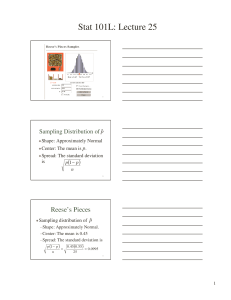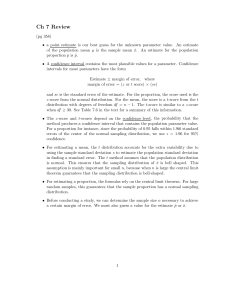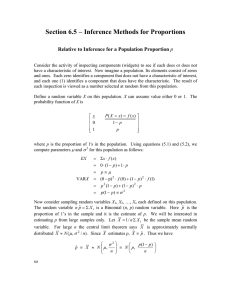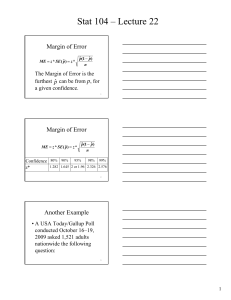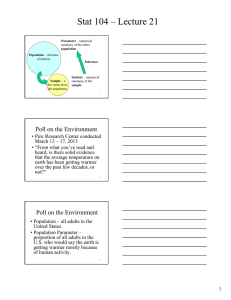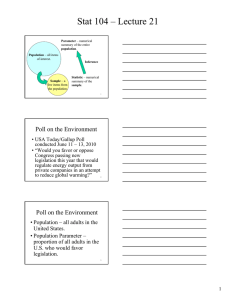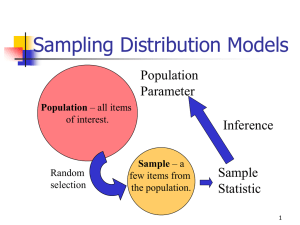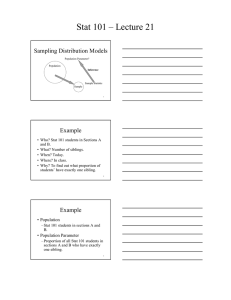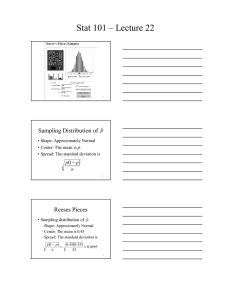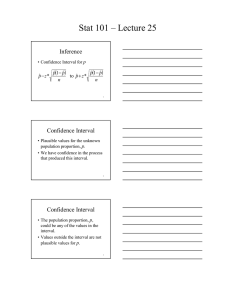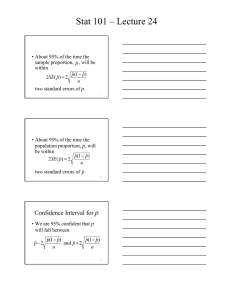Stat 101 – Lecture 23 ( ) Sampling Distribution Models
advertisement
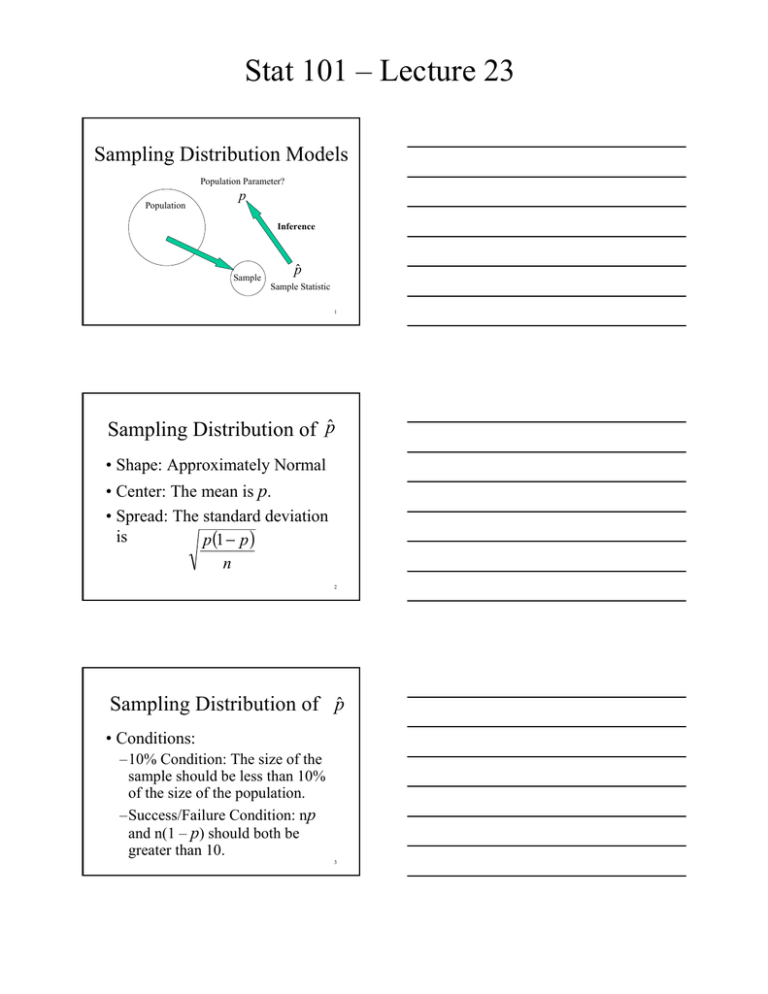
Stat 101 – Lecture 23 Sampling Distribution Models Population Parameter? Population p Inference Sample p̂ Sample Statistic 1 Sampling Distribution of p̂ • Shape: Approximately Normal • Center: The mean is p. • Spread: The standard deviation is p (1 − p ) n 2 Sampling Distribution of p̂ • Conditions: –10% Condition: The size of the sample should be less than 10% of the size of the population. –Success/Failure Condition: np and n(1 – p) should both be greater than 10. 3 Stat 101 – Lecture 23 p −3 pq n p−2 pq n p− pq n p p +1 pq n p+2 pq n p+3 pq n 4 Probability • If the population proportion, p, is known, we can find the probability or chance that p̂ takes on certain values using a normal model. 5 Inference • The population parameter, p, is most often unknown and we would like to use a sample to tell us something about p. • Use the sample proportion, p̂ , to make inferences about the population proportion p. 6 Stat 101 – Lecture 23 Example • Population: All adults in the U.S. • Parameter: Proportion of all adults in the U.S. who believe climate change is a major threat. Unknown! 7 Example • Sample: 1,004 randomly selected adults nationwide. Bloomberg Poll, Sept. 10-14, 2009. • Statistic: 402 of the 1004 adults in the sample (40%) think that climate change is a major threat. 8 68-95-99.7 Rule • 95% of the time the sample proportion, p̂ , will be between p −2 p(1− p) p(1− p) and p + 2 n n 9 Stat 101 – Lecture 23 68-95-99.7 Rule • 95% of the time the sample proportion, p̂ , will be within p(1− p) n two standard deviations of p. 2 10 Standard Deviation • Because p, the population proportion is not known, the standard deviation p(1 − p) SD( pˆ ) = n is also unknown. 11 Standard Error • Substitute p̂ as our estimate (best guess) of p. • The standard error of p̂ is: SE ( pˆ ) = pˆ (1 − pˆ ) n 12
